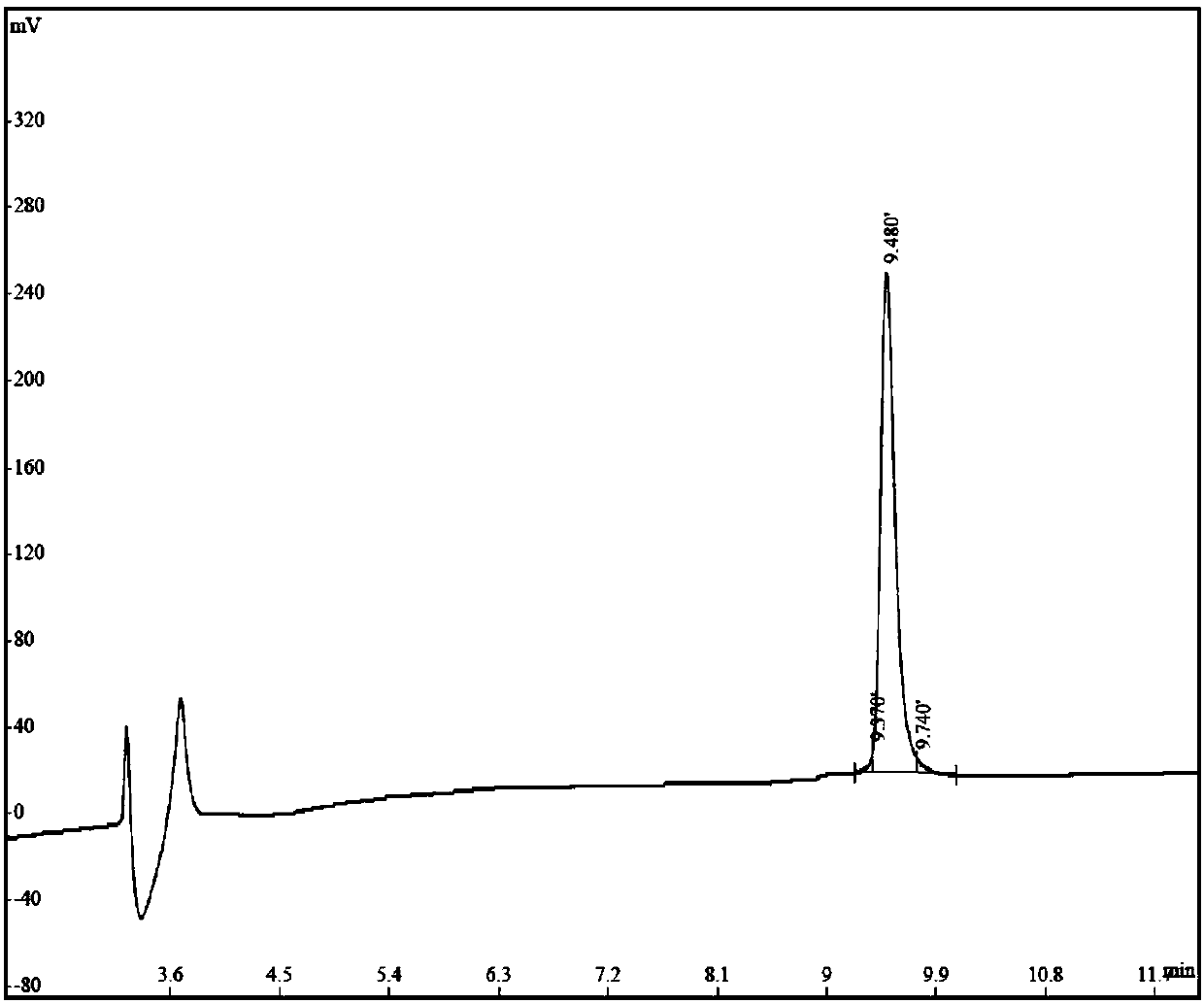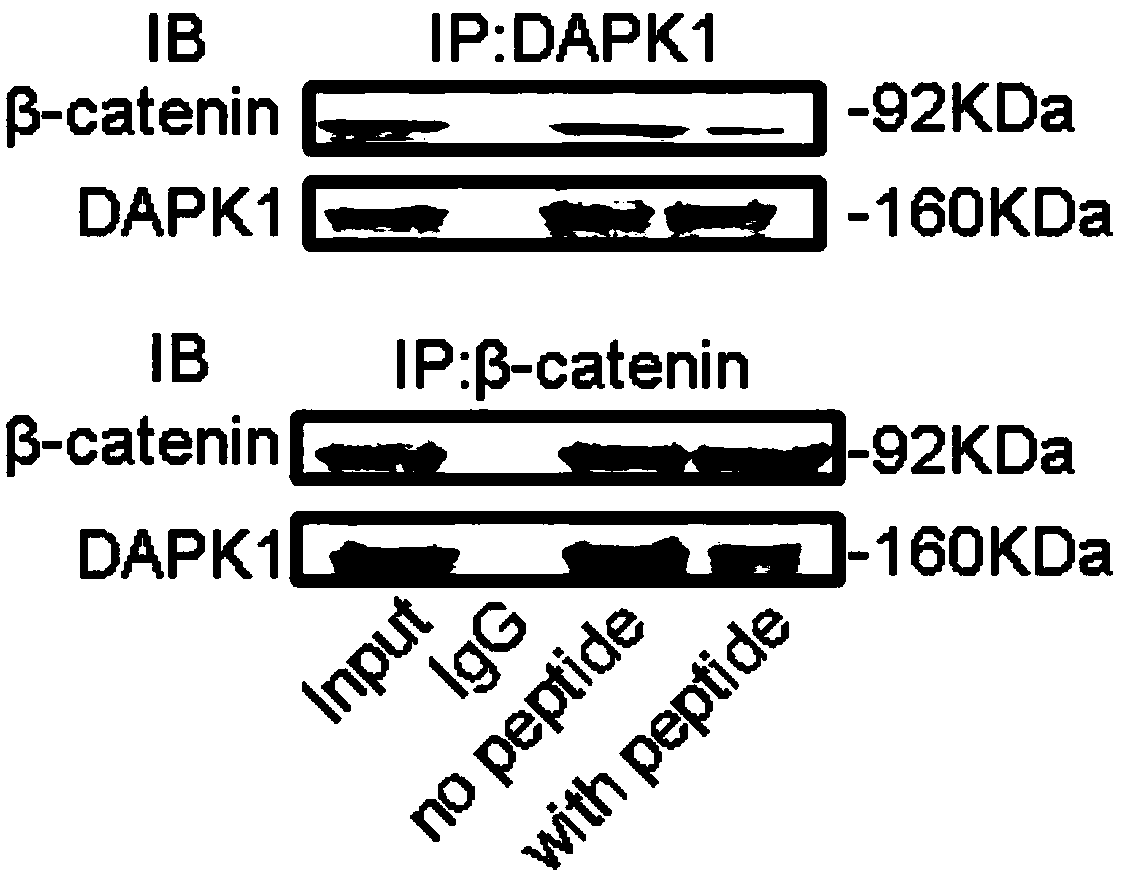Brain-penetrating polypeptide and application thereof in preparation of medicament for preventing and treating Alzheimer's disease
A technology for Alzheimer's disease, medicine, applied in the field of medicine
- Summary
- Abstract
- Description
- Claims
- Application Information
AI Technical Summary
Problems solved by technology
Method used
Image
Examples
Embodiment 1
[0071] Synthesis of TAT-siP-DC
[0072] The sequence of TAT-siP-DC is shown in SEQ ID NO.1, which was artificially synthesized by Shanghai Qiangyao Biotechnology Co., Ltd. The synthesis report is shown below, and the chromatogram is shown in figure 1 shown.
[0073] TAT-siP-DC Synthetic HPLC Report
[0074]
[0075] The purity of the synthesized TAT-siP-DC polypeptide is 97.14%, each 1 mg is in the form of white powder, completely soluble in water, sealed and protected from light and stored at -20°C. Before use, dilute it with normal saline for injection according to the specified concentration, and use it now.
Embodiment 2
[0077] The polypeptide TAT-siP-DC interferes with DAPK1 and β-catenin binding. See figure 2 .
[0078] The peptides were synthesized by Shanghai Qiangyao Company. Co-immunoprecipitation with DAPK1 antibody showed that the binding of DAPK1 and β-catenin did not change in the absence of the peptide; the presence of the peptide interfered with the binding of DAPK1 and β-catenin. Co-immunoprecipitation with β-catenin antibody further confirmed that TAT-siP-DC can interfere with the binding of DAPK1 and β-catenin. At the same time, it is also proved that our synthesized peptides are effective.
Embodiment 3
[0080] Application of TAT-siP-DC in senile dementia animal model
[0081] (1) TAT-siP-DC ameliorated the pattern separation disorder in APP / PS1 mice. See image 3 .
[0082]Pattern dissociation, a more complex hippocampal-related memory, is impaired by established patterns in patients with early AD. The episodic fear room includes a shock generator (AniLab, which can deliver 0.1 to 1.0 mA shocks) and is linked to a computer. The soundproof box is equipped with lights and small fans (for ventilation and background sound). In addition, there are voltmeters and sound intensity meters to detect the intensity of the stimulus. The difference between the A room and B room we use is that the bottom of the A room is placed with a 100% alcohol solution of benzaldehyde (0.25% concentration), the side wall of the B room is at an angle of 60° inward, and the A room is made of odorless 5% hydrogen Sodium oxide solution was wiped, and room B was wiped with pungent 1% acetic acid solutio...
PUM
 Login to View More
Login to View More Abstract
Description
Claims
Application Information
 Login to View More
Login to View More - R&D
- Intellectual Property
- Life Sciences
- Materials
- Tech Scout
- Unparalleled Data Quality
- Higher Quality Content
- 60% Fewer Hallucinations
Browse by: Latest US Patents, China's latest patents, Technical Efficacy Thesaurus, Application Domain, Technology Topic, Popular Technical Reports.
© 2025 PatSnap. All rights reserved.Legal|Privacy policy|Modern Slavery Act Transparency Statement|Sitemap|About US| Contact US: help@patsnap.com



